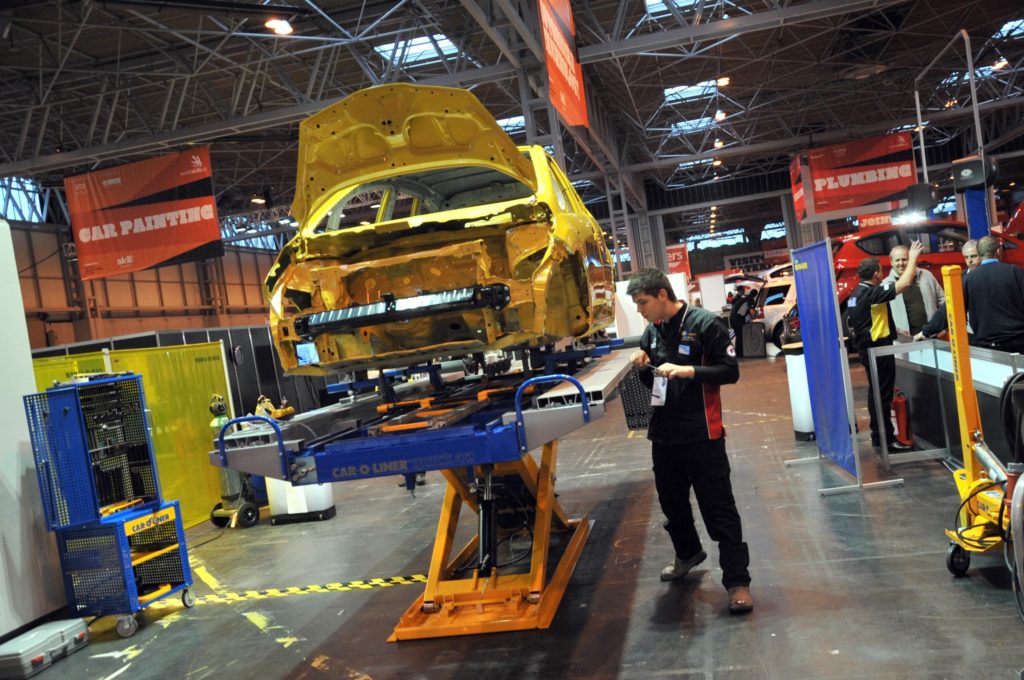Image Credit: WorldSkills UK on Flickr
As the world embraces automation, robots have taken over some of the labor in critical and dangerous jobs. In the past, industrial robots functioned within restricted environments. Today, however, collaborative robots, also known as cobots, interact naturally with humans. In their roles, they eliminate assorted risks that conventional robots can cause. What’s more, programming them is easy.
Cobots Applications
Collaborative robots work well when the job involves the gradual shifting of lightweight products. Usually, a robotic arm handles the materials. Some of the applications of cobots include:
Assembling of Parts
Collaborative robots do well with assembling small parts. This is especially true if the assembly does not require speed. Additionally, cobots can help workers with some more complex procedures.
For instance, the robot could perform the basic and repetitive movements. Then, the worker completes the task. In other words, the robot handles the easy part of the job. The human takes over where certain skills are needed.
Vision Systems
Cobots can be unified with vision systems for various tasks. For example, they can use a vision system to select parts out of cluttered containers. They can also conduct initial inspection of a part.
Packing
Collaborative robots can come in handy during packaging for shipment. That’s because cobots can be programmed to follow packing instructions. Therefore, they neither under pack nor over stuff boxes.
RELATED ARTICLE: ROBOTIC PROCESS AUTOMATION: YOUR BUSINESS’S NEXT STEP?
Benefits of Collaborative Robots
Today, business is super aggressive. Manufacturers must stay ahead of their competitors to survive. Collaborative robots help manufacturers remain competitive by enhancing efficiency.
Cobots also come with numerous other benefits, including:
Enhanced Expertise
In a conventional assembly organization, humans rack up robots with the required parts. The robots then execute the remaining job.
However, when a human needs to intervene, the production procedure often must be stopped. Or the human has to wait until the robot completes its task.
In a collaborative robot organization, however, robots and humans work together. This improves efficiency. Numerous studies show that this human-robot collaboration greatly reduces human idle time.
Appropriate for Mid-Scale and Small-Scale Production
Big industries with huge production volumes often prefer to use universal robotics. Conversely, both mid- and small-sized manufacturing companies frequently opt for manual labor in order to keep costs down.
However, there is a middle ground. And this middle ground may be more cost-effective in the long term for smaller manufacturers. For example, many cobots are easily adjustable and don’t need bulky organization procedures.
What’s more, there is a wide variety of cobots. Various models can perform such processes as packaging, lifting, and shaping. Others can sand, cut, polish, and sort. All of these are procedures that a mid- or small-sized manufacturer might require.
Enhanced Return on Investment
When manufacturing companies embrace collaborative robots, they get flexibility, efficiency, and production capacity. These factors are essential for increasing their return on investment (ROI).
This is in large part because workers can position collaborative robots anywhere. Further, they can conveniently relocate cobots when the need arises. This greatly reduces wasted motion during production. Increased manufacturing efficiency leads to reduced maintenance and labor costs. This increases both ROI and profits.
Collaborative Robots Are the Future
Some tasks will probably never be automated. However, more automation in manufacturing is inevitable. Therefore, human roles are sure to change over the next two decades as machines take over. But exactly how those roles will change cannot be precisely predicted.
Universal robots enable both human and machine to work together within the same environment. Further, as technology and research advances, the industry is sure to witness more developments. For example, experts expect that sales of cobots will rise in the near future as more manufacturing companies begin to adopt them.
Secure Work Environment
Cobots are designed to allow collaboration and human engagement. Therefore, they are exhaustively inspected to guarantee safety during the production process. As a result, collaborative robots provide a safe work environment. This is particularly true in applications where human mistakes can interfere with progress. For instance, robots can aid in medical operations. That’s because they execute their roles without making errors.
Finally
Continued research and development of cobots will make them capable of performing more dominant roles within the manufacturing industry. Therefore, a critical loss of manufacturing jobs could occur as cobots take over. In other words, cobots will simply render numerous manufacturing jobs obsolete.
Nonetheless, many more new jobs are sure to come up in the future. Workers will need to be willing to acquire additional training in order to adapt to the new opportunities.


